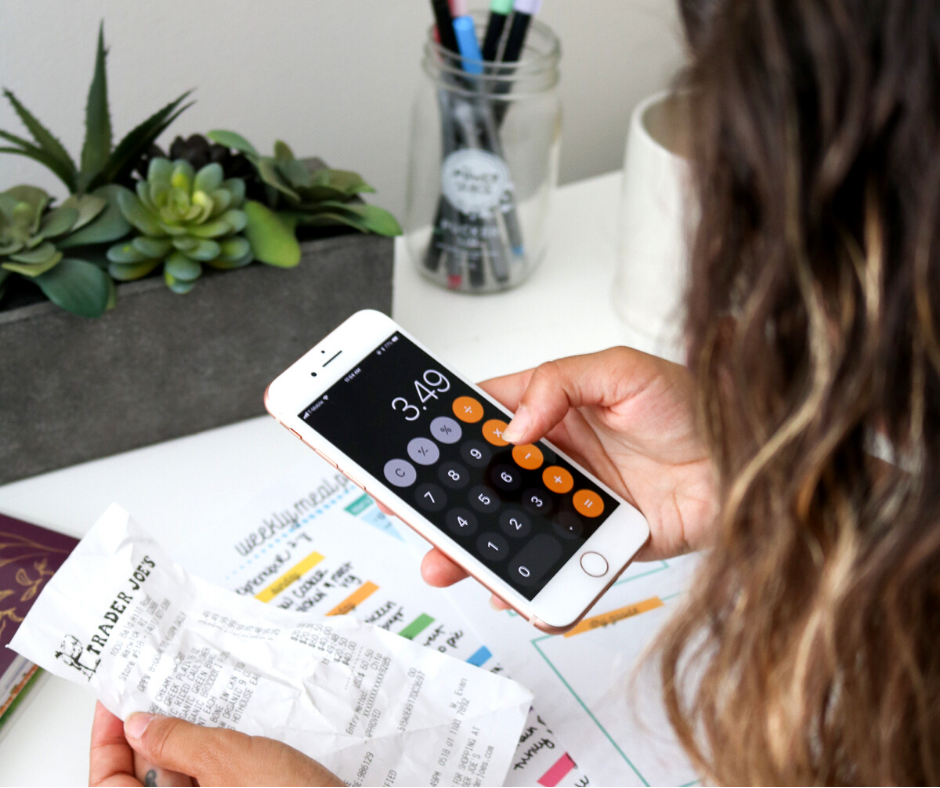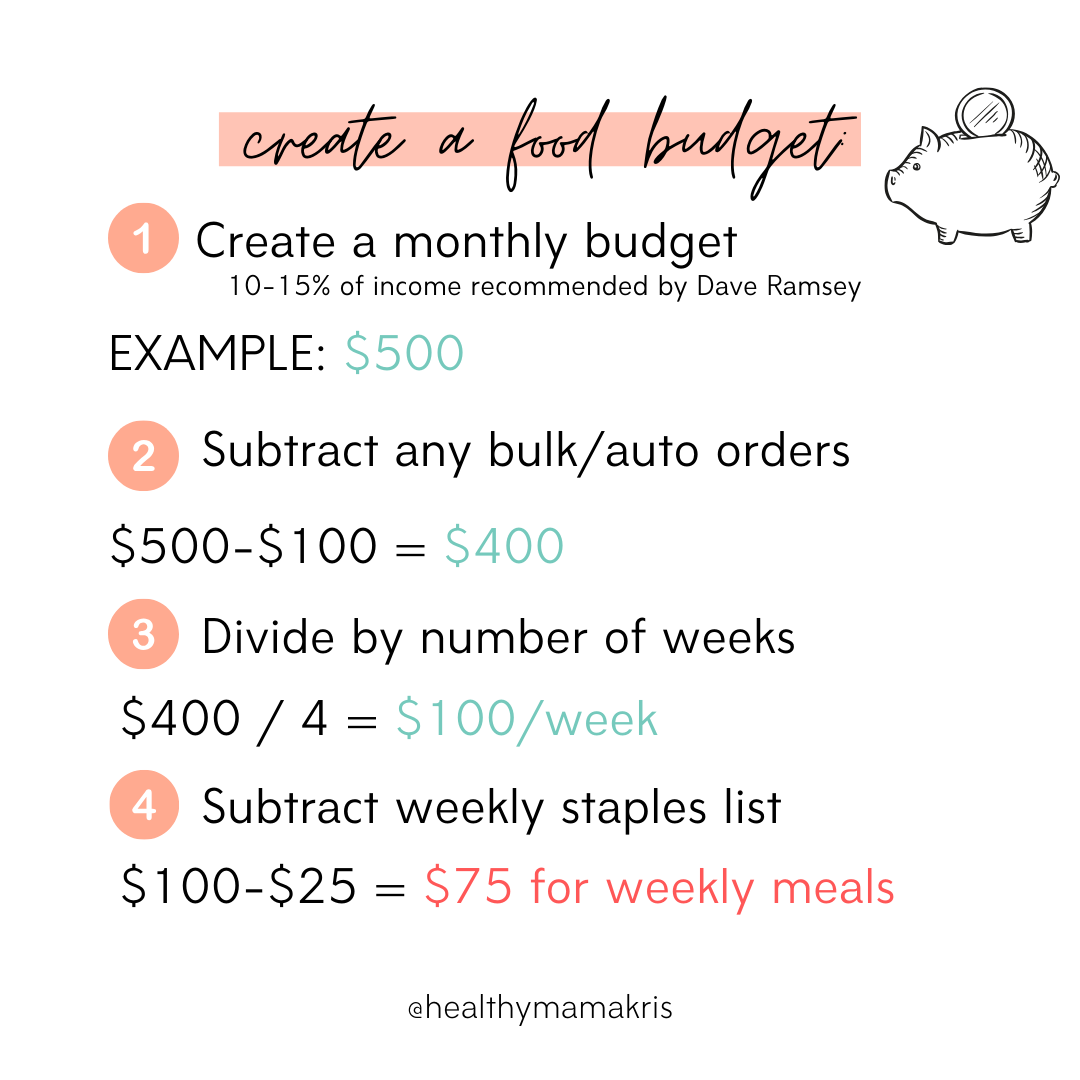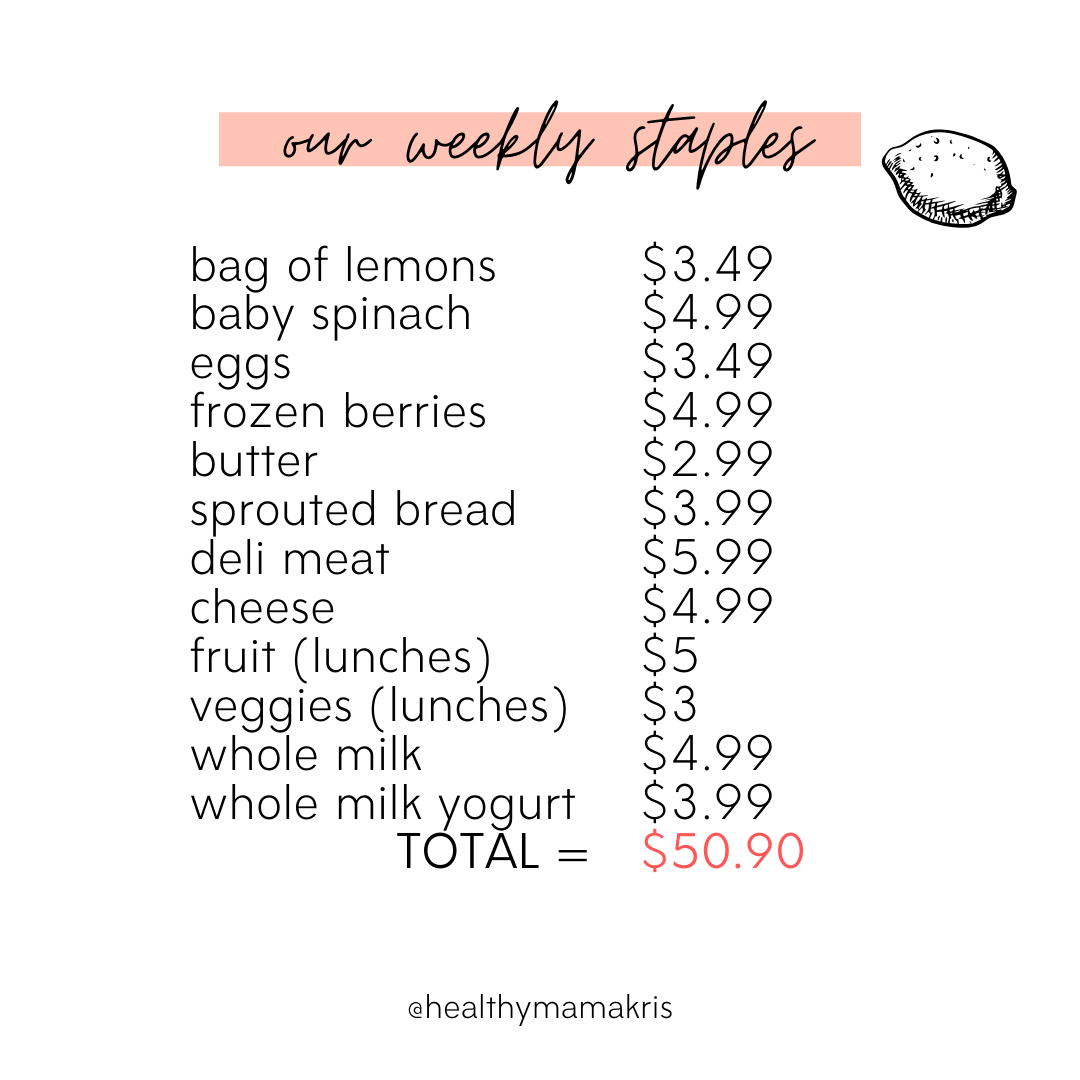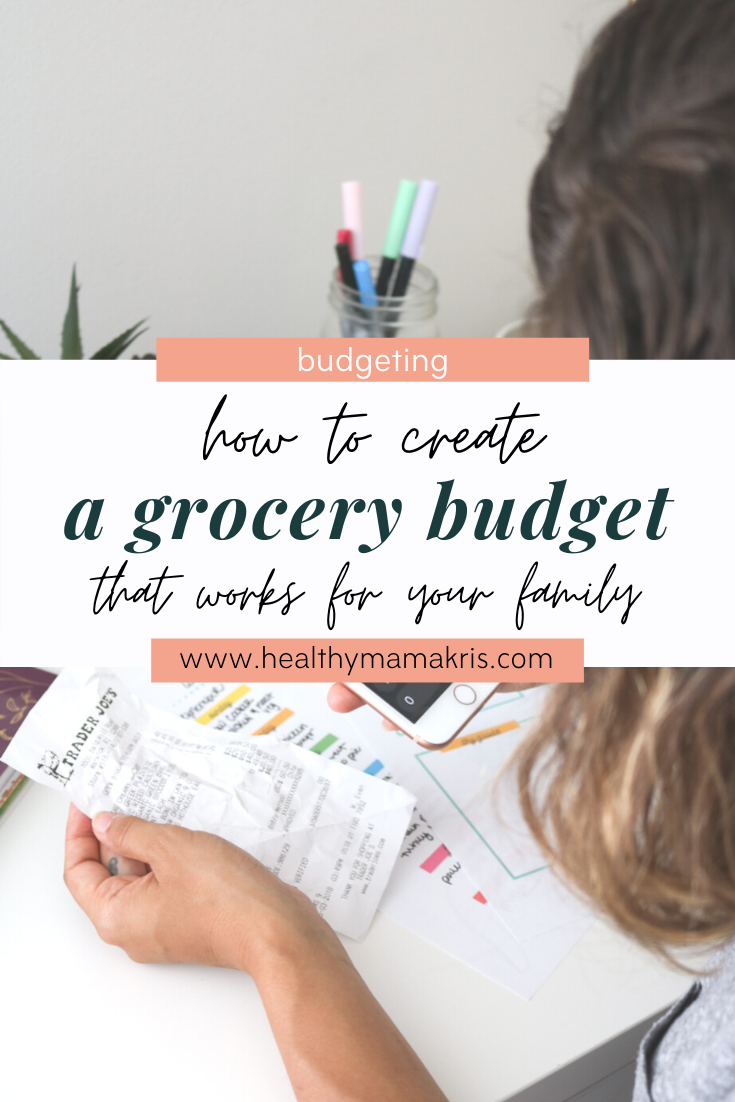
I’ve written about budgeting in the past, and I even did a bonus podcast episode on it, because it’s a question I get asked often. How DO you eat the foods that feel good to you and your family- while still sticking to a moderate budget?
In the podcast episode, I shared that budgeting was probably my least favorite part of adulting. And where I don’t think I’ll ever LOVE it, I have come to appreciate it more and more since working with my business and finance coach, Paige (her podcast episode is here).
One of the things she’s helped me learn is that much like with eating, the freedom in budgeting comes from the ability to CHOOSE where your money goes and what you’ll spend it on. It’s not a free-for-all, spend every penny you have on whatever and then leave nothing left for the important things- just like when we eat whatever, whenever, without ever considering how food makes us feel, we will likely end up run down and lacking. There is freedom in this balance.
Much like with eating, the freedom in budgeting comes from the ability to CHOOSE where your money goes and what you’ll spend it on
I’ve been asked several times to talk more about my unique way of budgeting for food- and some ways you can eat the way you want to eat without breaking the bank- and I honestly couldn’t think of a better time than now, many of us coming off of several months of not working or reduced work, and our eating potentially looking more haphazard, as well. As we slowly get back into our regular routines and habits, it’s also a fabulous time to re-focus on our food budget, as well- which is why I’m hosting a free, 30-day Healthy Mama on a Budget Challenge, starting June 1.We will be:
- Creating a monthly + weekly budget
- Planning our meals accordingly
- Tracking our weekly spending
- Avoiding unnecessary extras
- Getting back on track with our grocery budget before the start of summer
Are you in? It’s 100% free- sign up here to join us in this zero pressure, community focused challenge- we’re all in this together!

So with that- let’s talk budgeting! I thought I’d start by sharing how I budget for the foods that feel good for our family.
Before I begin, I want to make an important note: the numbers I am using are all examples, this is not at all me sharing with you how much we spend or how much I think you should spend on food. I’ll share how you can decide how much you should spend on food, in a later post.

My grocery budgeting method:
First and foremost, this is how we budget- I encourage you to make a budget that fits YOUR life. This means- if you like shopping every two weeks, budget and plan every two weeks. If you like shopping weekly- plan and budget weekly, etc.
We utilize several services to reduce our grocery budget and also allow us the products we love to keep on hand, like high quality meat and staple pantry items.
The two services we use for this are: Thrive Market (monthly) and Butcherbox (bi-monthly). As these are large parts of our grocery budget, we factor these in before creating our weekly budget.For example: If our monthly budget is $800 and we spend $150 at Thrive Market every month, and $150 at Butcherbox every other month ($75 monthly) this means we have:
$800
-$150
$650
-75
$575
Then, we can divide this total by 4 for our weekly budget. $575/4 = $144/week on other groceries.

Other subtractions:In the Summer/Fall we have also signed up for a local CSA so this is also factored in ($16/week we’ve already spent- so this lowers our budget to $128/week).
The same goes if you want to do a bulk shop (Costco/BJs/Sam’s Club, or one LARGE grocery shop- we often do this at Whole Foods) and divide the rest up the rest of the month.
For example:
$800/month
-$300 big shop
= $500
500/3 = $167/week for the rest of the month.
Not factoring in big shops or online orders is where I see MANY women get tripped up with their budgeting.
You also want to consider if you are going to consider meals out as part of your grocery budget, or separate. We keep them separate, because it’s easier for me to separate these in my head- but we know we eat out or do takeout twice a month as a couple and once a month as a family and this factors into our weekly meals, as well.
If we eat out an extra meal during the month, I do take this directly from our food budget. This is a personal choice- up to you how you want to handle this.
On a weekly basis, there are three ways we make our budget work:
- Weekly Staples list
- Meal Planning
- Prepping ahead
1. Weekly Staples List
To create our actual weekly list, first we need to take into consideration the staples we buy each and every week (or at least most weeks). This both simplifies shopping AND budgeting- so it’s a method I love to use. I spent some time pricing it out so I knew approximately how much we need every week on staples. Here’s an example of what this might look like:

We know we have plenty in our budget to cover the staples. We also know- even if we spend more one week or another, we NEED that each and every week- so we want to make sure that it’s available at the end of the month and prevents us from overspending at the beginning.
If you want to go even further, you can subtract this amount and knowing this, you know what you have to spend each week at the store on other items (this helps to calm down any extra buying that might push you over your budget).

If we don’t purchase all of the staples- more for the next week. You don’t have to go this detailed if you don’t want to- but when you are deciding how much you can get by on weekly, it can be helpful to start here, knowing your musts, and filling in the rest.
We try not to go over- because we typically do need that amount weekly and if we’re constantly taking from the next week, we end up in a pickle at the end of the month. If we do go over this, we take from the next week.
We have used a form of Jordan Page’s envelope system in the past to manage this. Now, I have a special account I use only for a few main expenses that I’m in charge of that we keep the grocery money in- and this works well for us because I kept leaving my envelope at home!
2. Meal Planning. This is HUGE. If you’re not meal planning, either you’re going to end up taking a second trip to the store (and often over-spending) or be eating some really weird meals (nothing wrong with weird meals, but I like a little more structure). Here are my best tips for meal planning (my whole method and a year’s worth of planning pages are in my healthy mama meal planner)
3. Prepping ahead. Doing some light prep is also KEY to making sure we’re actually eating the things on our plan and not just grabbing takeout. We don’t go crazy with this- we mostly prep ingredients- but it’s a great way to ensure we’re not overspending on food. When you have easy meals on hand, it’s easy to make meals!
Stay tuned for how to decide how much to spend on food and my best tips for staying on-budget.
JOIN US JUNE 1-30 FOR HEALTHY MAMA ON A BUDGET (it’s FREE!):

Past budgeting articles:
How to create a real food grocery budget
How to save money buying real food

Leave a Reply Cancel reply
5-day series: how to get started with meal prep for easier meals
free email series
©️ 2025 Kristin Dovbniak for Healthy Mama Kris | Template by Maya Palmer Designs | Privacy Policy | Terms